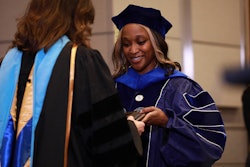 Dr. Nicholas Bowman
Dr. Nicholas Bowman
The December-published study, "The Role of Minoritized Student Representation in Promoting Achievement and Equity Within College STEM Courses", examined the effects of having URM and first-gen students in undergraduate STEM classes.
There are existing, notable disparities among those who pursue STEM degrees at four-year colleges and actually earn such degrees, based on the student-in-question’s race and ethnicity, the report pointed out. While more than half of white non-Hispanic (58%) STEM majors end up earning a STEM degree, 43% of Latinx and 34% of Black students do the same. And first-gen students are approximately 40% less likely than continuing-generation students to earn a postsecondary STEM degree.
For this study, the researchers analyzed 87,027 grades of 11,868 STEM-interested students – who started college in Fall 2015-2016 – in 8,468 STEM courses at 20 postsecondary institutions.
Half of the selected students were female; 26% were Asian; 13% Latinx/Hispanic; 6% Black/African American; and 9% multiracial or another race. For the purposes of the study, the researchers designated students who identified as American Indian/Alaska Native, Black/African American, Latinx/Hispanic, Pacific Islander/Native Hawaiian, multiracial, or other race/ethnicity as URM.
And a little over a quarter of the students examined were first-generation (27%).
The researchers found positive and significant associations between the proportion of URM students in STEM courses and with STEM grades – the same goes for the presence of first-generation students. Where there was high URM representation, the STEM grades of both white students and URM students were higher. Similarly, where there was high first-generation student representation, the STEM grades of both continuing-generation students and first-gen students were higher.




















